2/2003
Roll-Out Of The First ČD Pendolino
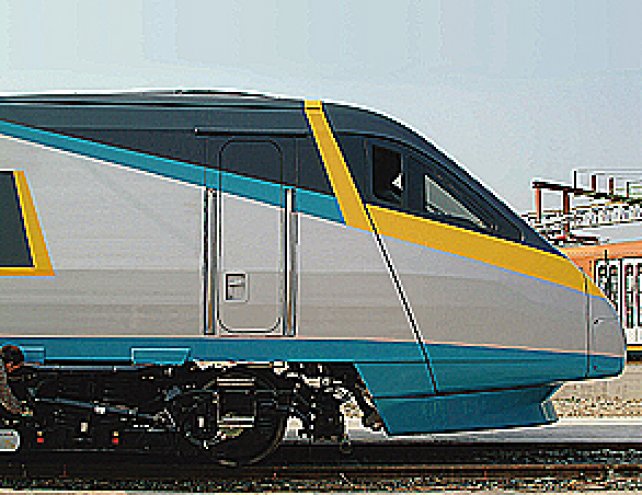
At the end of March 2003 Czech Railways' greatest-ever venture into the field of high-speed, long-distance, international passenger transport took a major step forward with the presentation of the first complete Class 680 Pendolino unit. The first of the batch of seven triple-voltage, tilting trainsets was completed at ALSTOM's Savigliano factory in March 2003, and was shown to representatives from ČD on the 26th of the month.
Photo: ALSOM
AVE S102
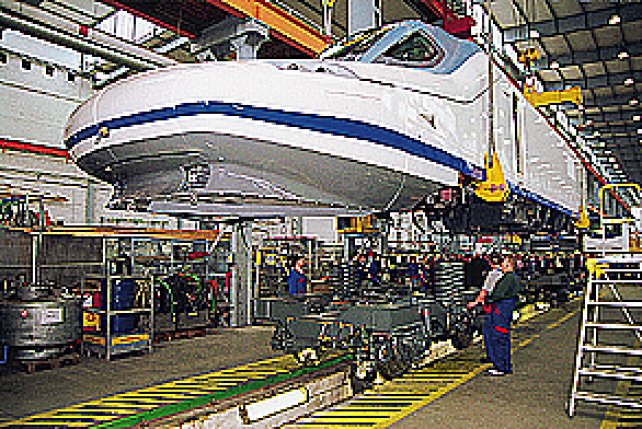
In March 2001 RENFE placed orders with Siemens and Talgo for 32 high speed trains („Trenes de Alta Velocidad“) for use on the evolving Madrid to Barcelona and Perpignan high speed line. Each order consists of 16 trainsets. Siemens offered a modified version of their ICE 3, which they branded as Velaro E and which RENFE allocated to its AVE Class S103 (see R 4/02, p. 58 - 59). Talgo's offering was a production run based on their prototype Talgo-TAV; these trains will be known as AVE Class S102. Under the terms of the contract for this new electric unit, the power cars would be built by Bombardier Transportation's plant at Kassel in Germany. It was here, on 10 April 2003, that the first of these locomotives was unveiled.
Installation of the bogies of the first AVE S102 power car took place on 12 March 2003.
Photo: Bombradier
First Trade Press Day At Kassel
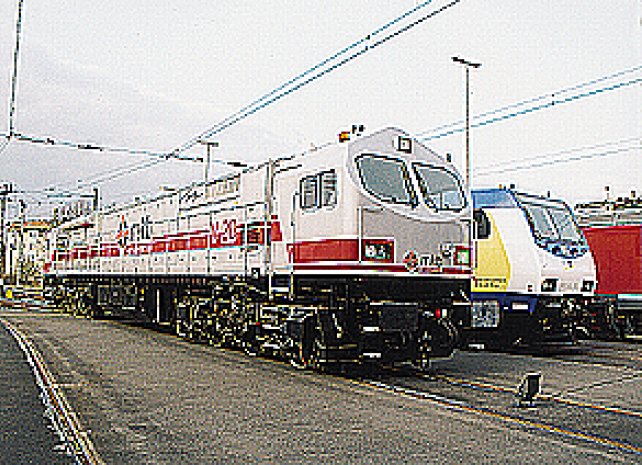
The First Trade Press Day was an open event held by Bombardier Transportation on 10 April 2003 within its Kassel works. Its objective was to invite railway journalists to discuss with the company's management a wide range of topics considered to be of mutual interest. Naturally, the Press Day also featured a presentation of all the latest news of activities which have been taking place at the Kassel factory, embracing both locomotive and freight wagon manufacture.
While MKB V 20 was on display, together with MetroRail MR 146-01, another two, practically-complete “Blue Tigers” destined for KEG took their place on the test bank. Both MetroRail activity and latest additions to the Class 185 family are described by separate articles in the Railvolution 2/03 issue as well.
Photo: Tomáš Kuchta
The ZSSK Class 840 Diesel Railcar
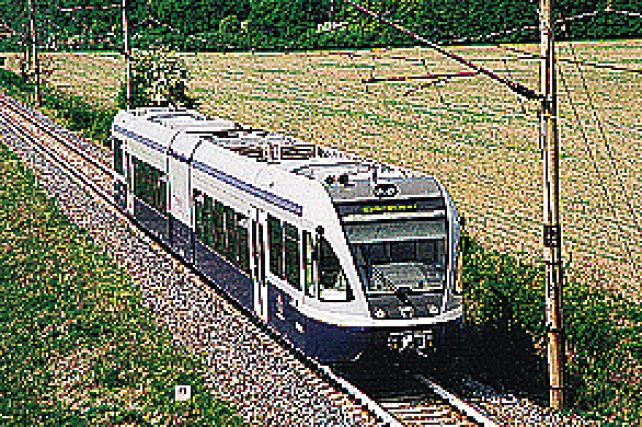
These railcars are being built by a consortium formed of Stadler, Bombardier Transportation and ŽOS Vrútky. In 1998 Slovakian Railways (then known as ŽSR or Železnice Slovenskej republiky) placed an order for 14 GTW 2/6 EMUs, which were destined to become the new Class 425.95 (see R 2/02, page 43); these were delivered over the period 2000 (425.951) to 2002. The contract also contained an option for the construction of a DMU of similar design, the total value of this second batch amounting to no more than half that of the EMUs. Taking advantage of this, in 2001 ŽSR decided to order six GTW 2/6 DMUs, which the new ZSSK (Železničná spoločnosť literally translates as “Railway Company”) has designated as Class 840.
The first of six new Class 840 units for ZSSK is currently undergoing trials on the Czech Test Circuit (ŽZO) at Cerhenice, the photo captured it there on 9 May 2003.
Photo: Tomáš Kuchta
A New Dawn For Virgin
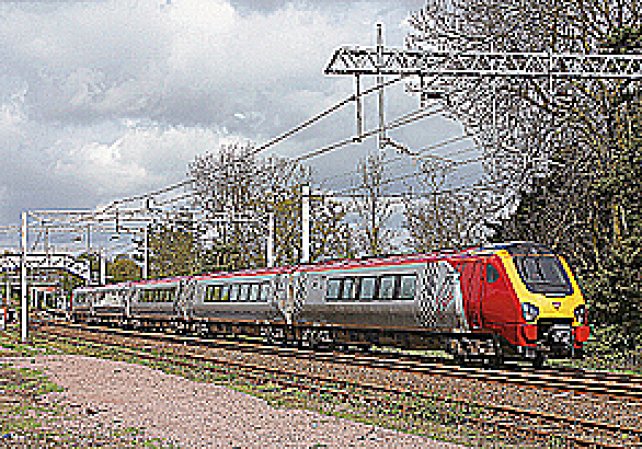
On 30 September 2002, the first weekday of the winter timetable, Virgin Trains CrossCountry launched its long-awaited "Operation Princess", involving the most radical recasting in history of the group of long-distance services the company inherited from British Rail. The centrepiece of this massive transformation featured 78 new "Voyager" and "Super Voyager" diesel-electric trainsets. Virgin's objective was to introduce onto the CrossCountry network a clockface (regular interval between departures) timetable pivoting around the heart of the system at Birmingham New Street station...
5-car Super Voyager 221 130 "Michael Palin" passes Berkswell on 26 April 2003, on 06.52 Newcastle to Bournmouth service.
Photo: Bob Sweet
InterConnex Poised To Launch Köln - Rostock Services
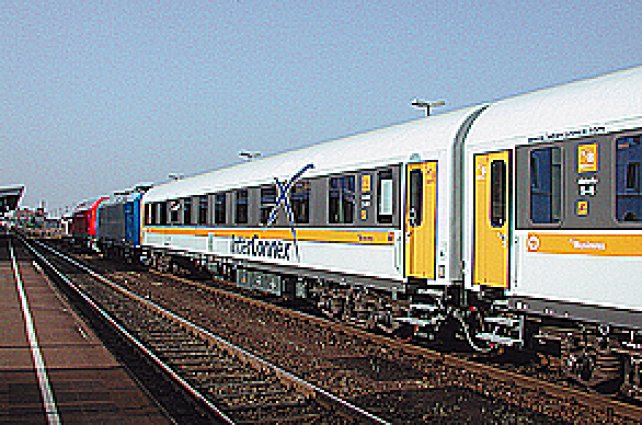
As from 6 June 2003 the Connex group will provide a new long-distance passenger service within Germany, substantially longer than those which it currently operates, and, for the first time, not wholly within the area of the former East Germany. One pair of trains daily will cover the 912 km between Köln and Rostock, travelling via Siegen, Giessen, Kassel, Nordhausen, Halle and Berlin, making 31 intermediate stops, and requiring slightly over twelve hours for the journey. Between Köln and Berlin the InterConnex is slower than the more direct DB inter-city services, therefore not targetting the long-distance travel market as such, instead endeavouring to cater for the demand for journeys between various provincial centres, and between these and the larger connurbations
The photo shows the Business and Economy Class coaches.
Photo: Clemens Schumacher
Provincial Latvian Tramway Networks - Struggle For Survival
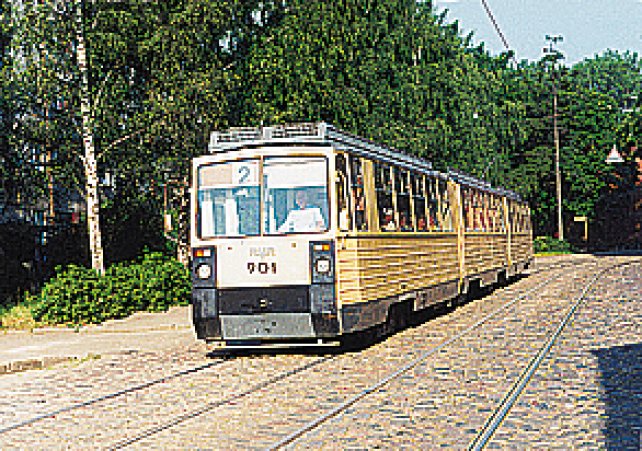
It is perhaps an unfortunate global characteristic that in many aspects of development, the capital city of a country stands to benefit at the expense of smaller regional centres. In terms of public transport evolution, this is particularly evident in the Baltic State of Latvia. In the capital city of Riga, the municipal operator has recently completed a modernisation programme of its Czech T3 trams, thus extending their lifespan by a minimum of fifteen years, has purchased large batches of new buses and trolleybuses, and is currently preparing a design project for new vehicles. Meanwhile, the other two surviving urban tramway systems in Latvia are literally struggling for survival.
Tram type TR1, No. 901, represented RVR's (R?gas Vagonu R?pn?ca) venture into building articulated tram designs. This capture was taken in Mangrietas iela Street in 1995, the vehicle is no longer in service.
Photo: Igors Kločkovs
And much more!
Cover of 2/2003
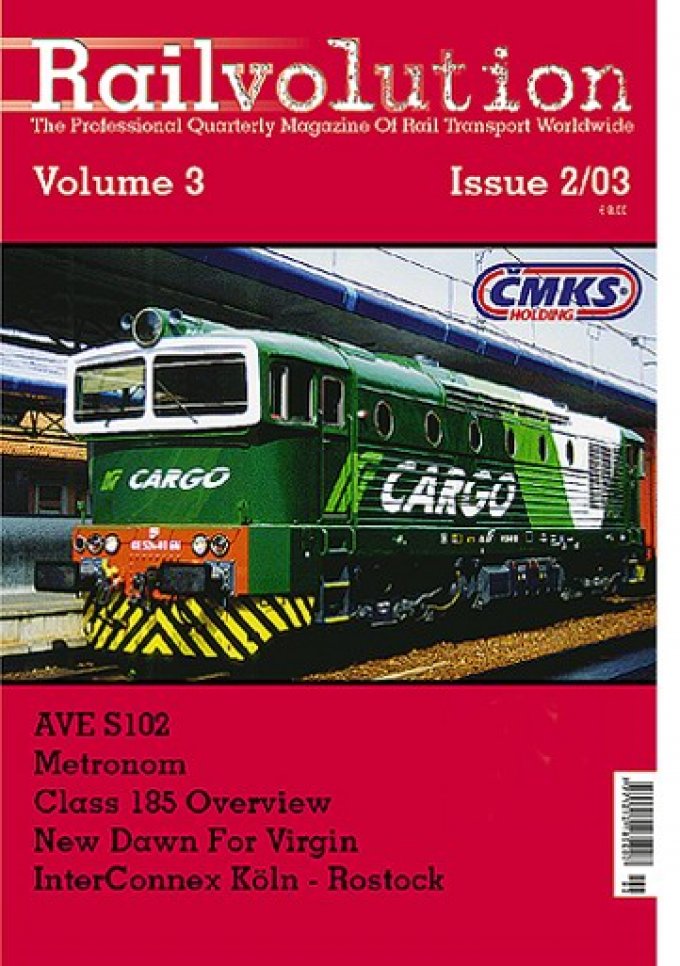
Poster
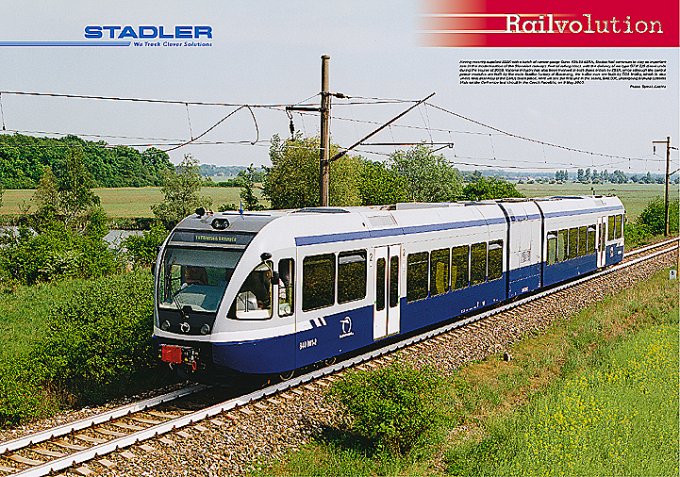
Features: 840 ZSSK
